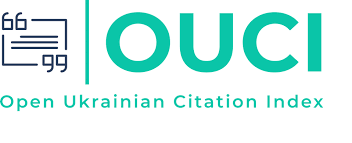КОЛІРНА МЕНТАЛЬНІСТЬ У НІМЕЦЬКОМУ СЕРЕДНЬОВІЧЧІ: принципи медієвістичної когнітивно-квантитативної зіставної реконструкції (на основі давньоверхньонімецьких і середньоверхньонімецьких текстів)
DOI:
https://doi.org/10.31861/gph2021.831-832.3-12Ключові слова:
медієвістика, колірна ментальність, когнітивно-квантитативна зіставна реконструкція, синергія, голістична парадигма, трихотомія, пост-некласична лінгвістика, “нова філологія”Анотація
У статті поставлено за мету дослідити теоретичні концепції та їх інтеграцію у процесі медієвістичної когнітивно-квантитативної зіставної реконструкції колірної ментальності у
німецькому Середньовіччі.
Авторами статті відзначено, що при реконструкції менталітету цього періоду, який репрезентує частину культури, слід керуватися цілісним (голістичним) методом з використанням формалізовано-квантитативних методик, оскільки глибокий символізм пронизував життя людей у період німецького Середньовіччя на всіх його рівнях. Реконструкцію середньовічного колірного менталітету запропоновано проводити на трьох рівнях: 1) шляхом аналізу літературних пам’яток; 2) шляхом аналізу тих чи інших фрагментів мовної картини світу; 3) шляхом етимологічно-змістового аналізу слів.
У статті встановлено, що з метою дослідження менталітету як відображення культури варто обирати лише суттєві для всіх мовців лінгвокультурні категорії, а саме такі модулі як кольоропозначення. У статті відзначено, що і в текстах, і в словниках мовну картину світу репрезентовано словами і фразами, поєднані за семантикою в різночастиномовні лексико- фразеологічні поля. Авторами констатовано, що реконструкція охоплює такі мовні засоби, які належать до різних частин мови і на яких відобразилися як тогочасне синтагматичне мислення, так і його синкретичність.
Водночас у статті запропоновано розглядати голістичну парадигму як основу “нової філології”, що визначається як поєднання мовознавства та літературознавства, культурології, логіки, етнолінгвістики та психології. У перспективі комплексне вивчення давньоверхньонімецьких і середньоверхньонімецьких слів за цими принципами, а також із використанням формалізовано- квантитативних методик допоможе визначити не лише лінгвокультурні особливості, а й об’єктивно встановити мовну картину світу Середньовіччя на тлі його культури.







